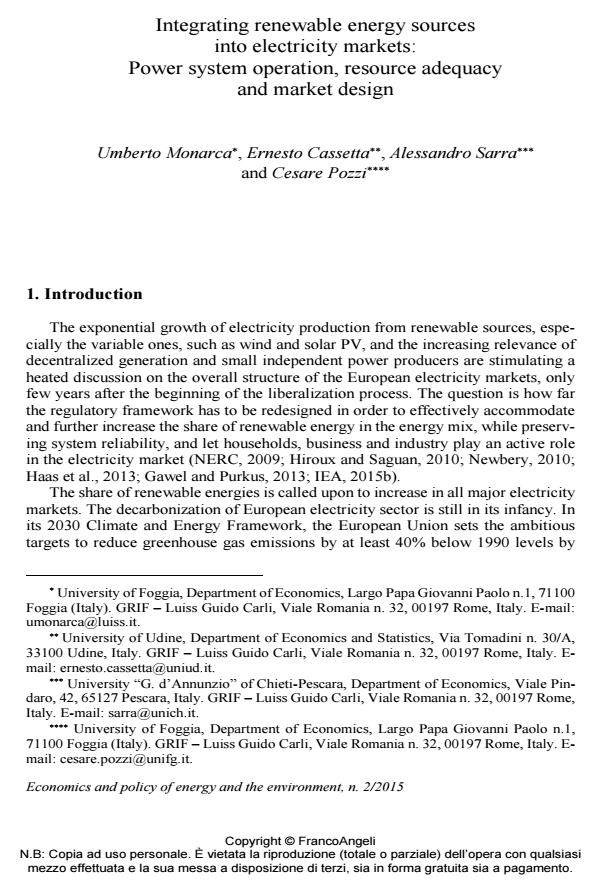Integrating renewable energy sources into electricity markets: Power system operation, resource adequacy and market design
Journal title ECONOMICS AND POLICY OF ENERGY AND THE ENVIRONMENT
Author/s Umberto Monarca, Ernesto Cassetta, Alessandro Sarra, Cesare Pozzi
Publishing Year 2016 Issue 2015/2
Language English Pages 18 P. 149-166 File size 210 KB
DOI 10.3280/EFE2015-002010
DOI is like a bar code for intellectual property: to have more infomation
click here
Below, you can see the article first page
If you want to buy this article in PDF format, you can do it, following the instructions to buy download credits

FrancoAngeli is member of Publishers International Linking Association, Inc (PILA), a not-for-profit association which run the CrossRef service enabling links to and from online scholarly content.
Focusing on the Italian power system, the article examines how the national regulatory framework has been modified to effectively accommodate and further increase the share of renewable energy in the energy mix while preserving system reliability. This paper argues that operational changes and regulatory measures adopted so far, which are mainly directed to create a level playing field between different energy sources, constitute a short-term response, and thus of limited effectiveness while increasing cost for consumers. To intensify the de-carbonization process of the Italian power system a more fundamental revision of the current market design is required. In this view, an essential ingredient is the future expansion of the electricity grid starting from a clear recognition of energy mix that we intend to reach in the mid/long term.
Keywords: Renewable energy policy, reliability of supply, resource adequacy, regulation shortcoming, market integration, capacity payment
Jel codes: L52, L94, L98
- A three-step procedure to investigate the convergence of electricity and natural gas prices in the European Union Ernesto Cassetta, Consuelo R. Nava, Maria Grazia Zoia, in Energy Economics 105697/2022 pp.105697
DOI: 10.1016/j.eneco.2021.105697 - Determinants and barriers of PV self-consumption in Spain from the perception of the installers for the promotion of distributed energy systems José Ángel Gimeno, Eva Llera Sastresa, Sabina Scarpellini, in ECONOMICS AND POLICY OF ENERGY AND THE ENVIRONMENT 1/2020 pp.153
DOI: 10.3280/EFE2020-001007 - EU Electricity Market Integration and Cross-Country Convergence in Residential and Industrial End-User Prices Ernesto Cassetta, Consuelo Rubina Nava, Maria Grazia Zoia, in SSRN Electronic Journal /2021
DOI: 10.2139/ssrn.3995825
Umberto Monarca, Ernesto Cassetta, Alessandro Sarra, Cesare Pozzi, Integrating renewable energy sources into electricity markets: Power system operation, resource adequacy and market design in "ECONOMICS AND POLICY OF ENERGY AND THE ENVIRONMENT" 2/2015, pp 149-166, DOI: 10.3280/EFE2015-002010